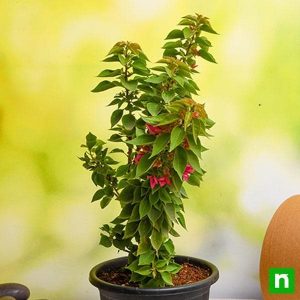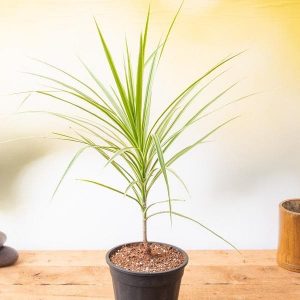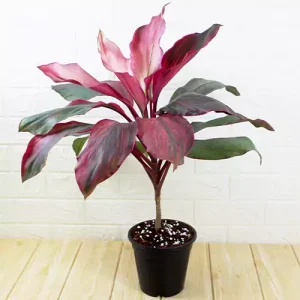Description
| Sr | Item name |
|---|---|
| 1 | Krishna Kamal, Passion flower, Passiflora incarnata (Purple) – Plant |
This product does not have the flowers at the time of shipping. Afterward, the plant will bloom and that will be of purple colored flower.Passiflora is a genus of Passion Flower Family, Passifloraceae. There are over 550 species in the Passiflora.
It is a small vine that trends to grow in all directions and therefore looks best in natural and informal plantings.Passion flower are deciduous perennial flowering plants with large leaves, serrated and have typically 3-5 lobes. Its flower blooms one by one beginning at the oldest part of the vine and proceed sequentially along its length and flowers are showy, 2.5 diameter, fringed flowers having white or purple petals and sepals and a central crown of pinkish-purple filaments.Flowers bloom in summer and are fragrant. Fleshy, egg-shaped, edible fruits called maypops appear in July and mature to a yellowish color in fall.
Plant Specifications
| Plant Height | 19 inch (48 cm) |
| Plant Spread | 5 inch (13 cm) |
| Common Name | Passionflower, Purple passionflower, Apricot Vine, Maypop, Wild Passionflower, Rakhi Flower. |
| Maximum Reachable Height | 2-4 meter |
| Flower Color | Purple |
| Bloom Time | June-August in Northern India, December-February in Southern India |
| Difficulty Level | Easy |
Planting And Care
Sunlight
- Morning sunlight of 3 – 6 hours a day is ideal for flowering and plant grow well in bright light for rest of the day.
Soil
- The soil should be well drained, fertile and rich in organic content for growing Passionflower plant.
Watering
- Poke your finger/plain small stick into the soil to check the moisture.
- Apply 3 cup(approx.150ml) of water when the topsoil (1-2 inch) in the pot feels dry to touch.
- Do not overwater the plant.
- As a rule of thumb, water the plants thoroughly in summer and reduce watering in winter and rainy season.
- Water should be applied preferably in the morning or evening.
Application of Fertilizer
- Before application of fertilizer loosen the topsoil without disturbing the roots of the plant so, it can uptake the nutrients and moisture easily.
- Apply organic fertilizer once a month during the main growing season (February-March)
- Apply water immediately after application of fertilizer.
Plant Protection
- Remove dead, infected or damaged plant parts and discard them away from the plants.
- For any insect attack or disease, you can use Neem oil, Eucalyptus oil or Citrus oil spray for primary treatment.
Don’ts
- Do not overwater the plant specially when pot doesn’t have drainage hole.
- Avoid applying water on flowers and leaves it may cause fungus infection.
Krishna Kamal Care
Initial care for 1-2 weeks after receiving plant at your location:
- Poke your finger/plain small stick into the soil to check the moisture.
- Apply 3 cup(approx.150ml) of water when the topsoil (1-2 inch) in the pot feels dry to touch.
- Keep the plant in artificial bright light.
- Do not re-pot for min. 2 weeks after receiving it.
Key requirements to keep plant healthy:
| Sunlight | Natural bright light with morning sunlight (3-6 hours) |
| Watering | Apply 3 cup(approx.150ml) of water when the topsoil (1-2 inch) in the pot feels dry to touch. |
| Soil | Well drained, fertile and rich in organic content |
| Temperature | 25-32 Degree Celsius |
| Fertilizer | Apply organic fertilizer once a month during growing season (February-March) |
Krishna Kamal Special Feature
It has a unique flower shape and fragrant.
Krishna Kamal Uses
Ornamental Use:
- They are used to grown on fences or trellises or allowed to scramble over shrubs and trees or other support structures.
Medicinal Use:
- Historically, the plant has been used as an herbal medicine in the belief it may treat anxiety, insomnia or hypertension.
- Passionflower roots are used to make tea in North & South America
- Note: The following information is general guidelines, be sure to ask your healthcare provider for guidelines





Reviews
There are no reviews yet.